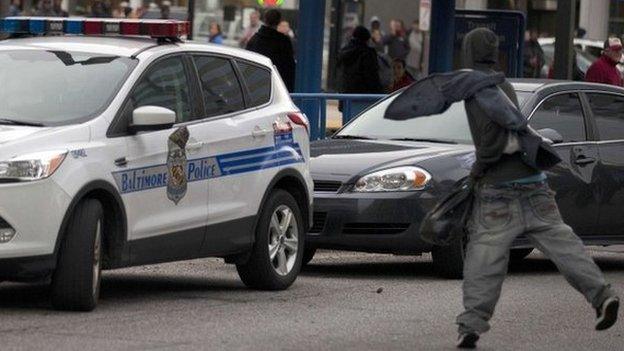Freddie Gray: How Baltimore differs from Ferguson
- Published
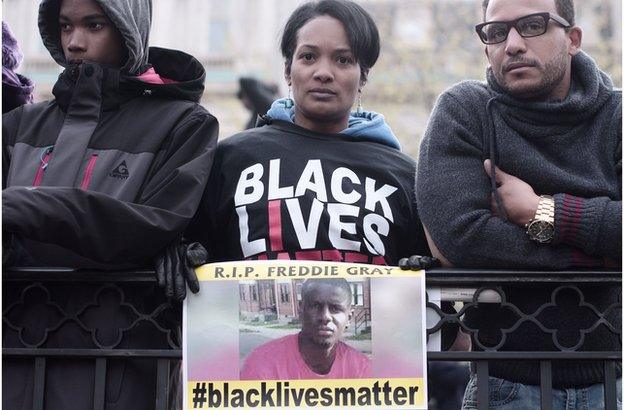
Protesters in Baltimore have taken to the streets following the death in police detention of 25-year-old Freddie Gray. Aleem Maqbool, who covered the Baltimore protests at the weekend and the Ferguson protests last summer over the shooting of Michael Brown, assesses the two situations.
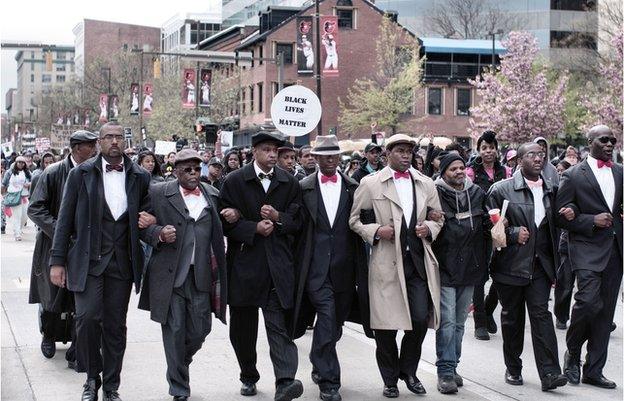
"No justice, no peace! No racist police!" The slogans shouted in Baltimore are familiar from Ferguson and numerous demonstrations held across the US after the deaths of black men at the hands of the police.

"The world is watching now". Those supporting the marchers as they went past told the BBC these types of deaths were nothing new. But they said that the protests last summer following the killing of the unarmed black teenager, Michael Brown by a police officer in Ferguson, Missouri, had inspired people to take to the streets to fight for justice.
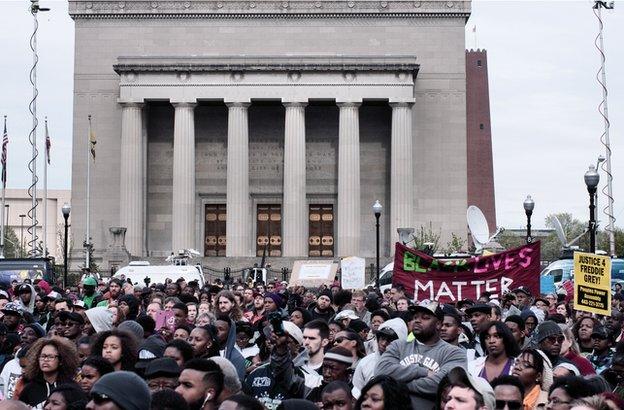
Trying to learn the lessons from previous incidents, the mayor and police officials in Baltimore moved quickly to assure people that they would get to the bottom of what happened to Freddie Gray. Hundreds attending a peaceful rally in the centre of the city were unconvinced, though - they want officers charged.
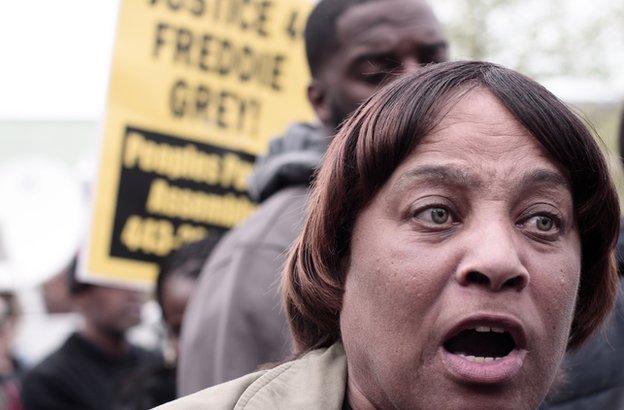
Patricia Trousdale, Baltimore protester, said: "That could have been my son. I want to respect the police, and we do need protection, but I'm scared of them. Any time they can kill you in broad daylight and get way with it. They talk about gangs? Most notorious gang is the police."
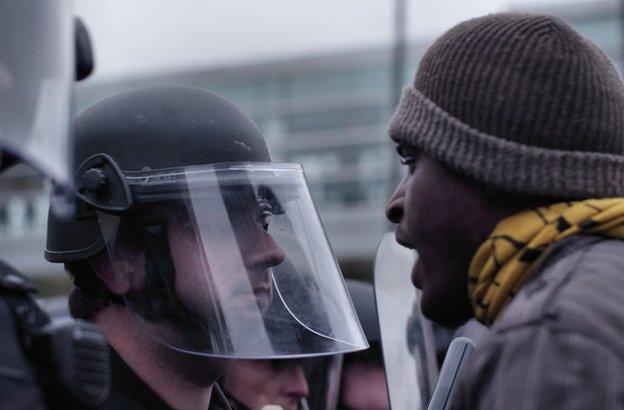
It was clear, however, that police in Baltimore had been instructed to allow protesters to vent their anger. Last year in Ferguson, police were accused of aggravating protests through their heavy-handedness and over militarisation.

Unlike Ferguson, where confrontation was mainly confined to a small area close to where Michael Brown was killed, in Baltimore protesters occupied the heart of the city, bringing it to a standstill for several hours. Fans inside the Camden Yards baseball stadium were told not to leave as tensions outside rose.
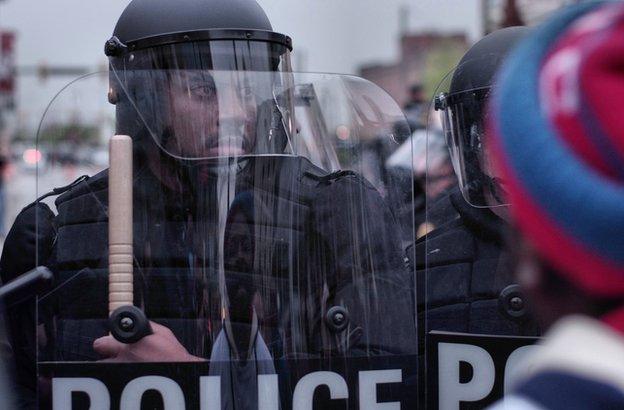
There were more black officers evident in Baltimore than in Ferguson, where the number of white officers was disproportionately higher compared to the city's racial make-up. But those black officers sometimes became the target of abuse from a small group of increasingly agitated protesters.

"I'm going to be violent. All of that peace, I'm done with peace. I tried to be peaceful. These are our streets not theirs. They're killing us," this 19 year-old told us.
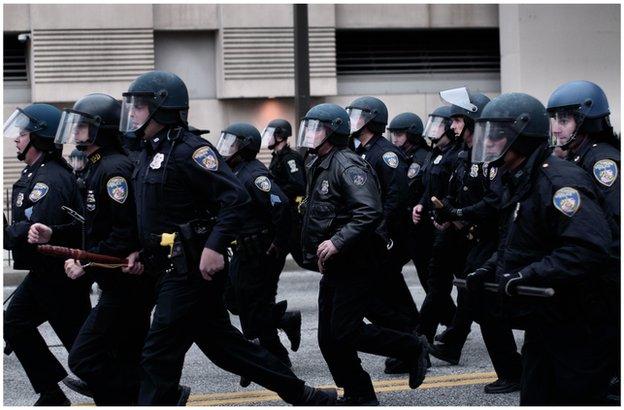
Eventually police retaliated, using pepper spray and making arrests. There was no tear gas - or the armour of the Ferguson protests - but such confrontation in the heart of a major American city is still shocking to many.

In Baltimore, Freddie Gray is being mentioned in the same breath as Michael Brown, Walter Scott, who was shot dead by police following a traffic stop, Eric Garner, who died while being restrained by an officer, and Trayvon Martin who was followed and shot dead by a neighbourhood watch member. Martin's face adorned this mural in Baltimore.
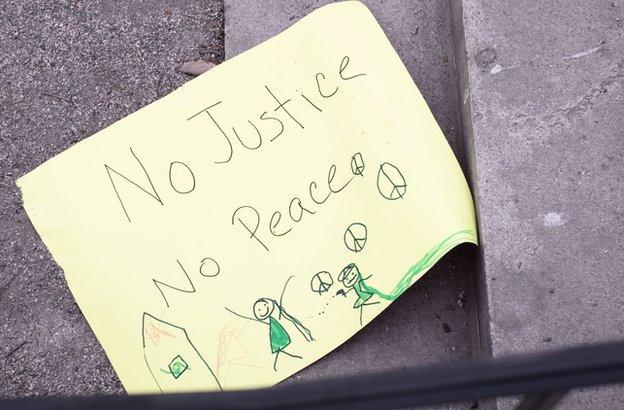
It is clear a national struggle over race, policing and perceived prejudice and injustice is only gaining momentum in the US. The protests in Baltimore were only the latest episode of something that has become much larger.
All photos by Kenny Karpov for the BBC.
- Published26 April 2015
